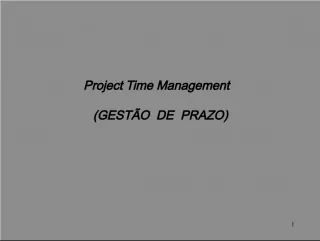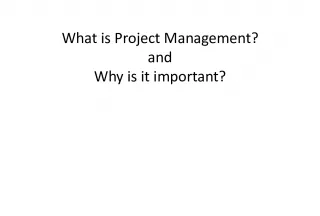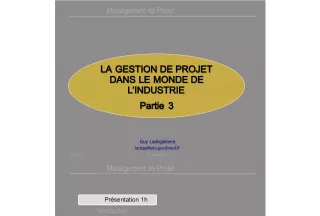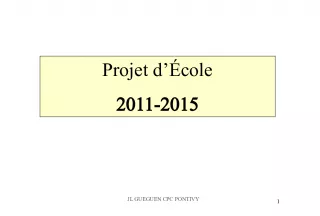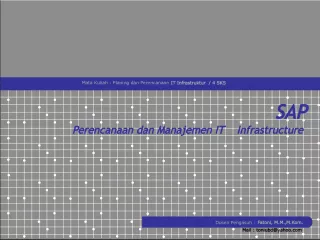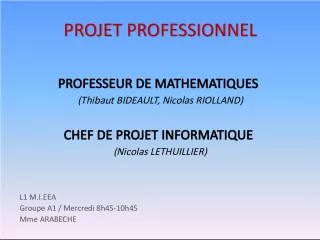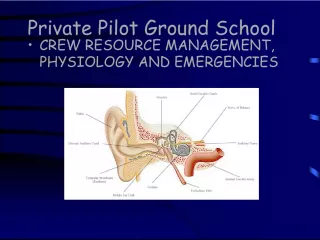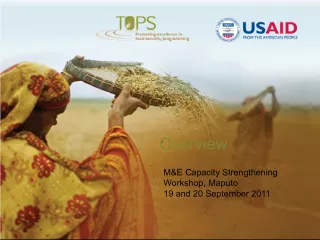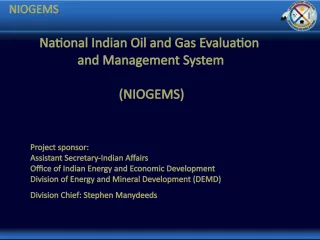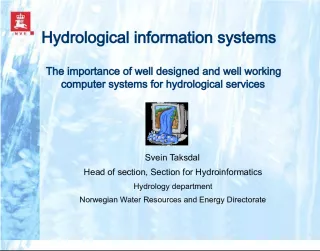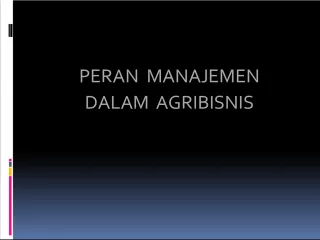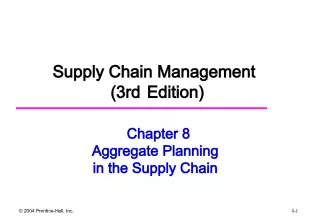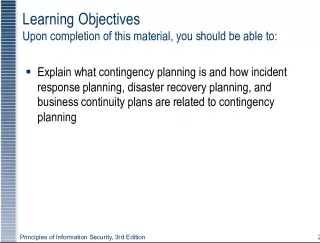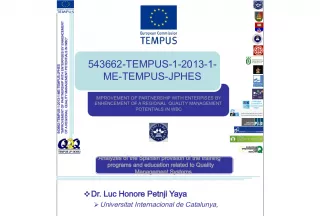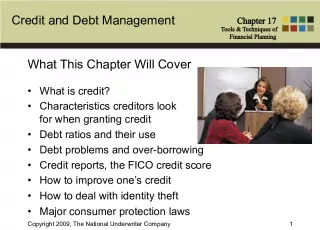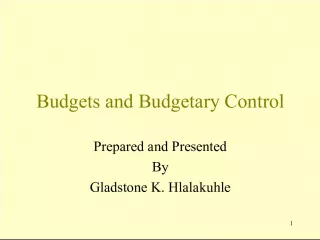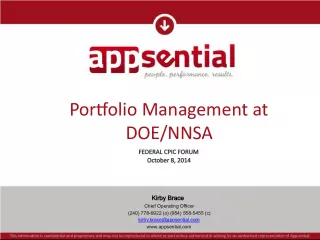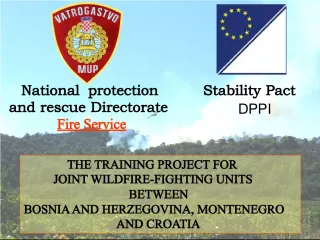Resource Planning in CLAMDA IM Project Management


Learn how to integrate time planning with resources planning, define resource availability, balance resource allocation, and react when resources are insufficient. This includes not only human resources but also machinery, ICT, and structures.
- Uploaded on | 2 Views
-
 aleisha
aleisha
About Resource Planning in CLAMDA IM Project Management
PowerPoint presentation about 'Resource Planning in CLAMDA IM Project Management'. This presentation describes the topic on Learn how to integrate time planning with resources planning, define resource availability, balance resource allocation, and react when resources are insufficient. This includes not only human resources but also machinery, ICT, and structures.. The key topics included in this slideshow are project management, resource planning, time planning, allocation, availability,. Download this presentation absolutely free.
Presentation Transcript
1. CLAMDA-IM Project Management Project Management 3. The Project Planning a. Project Plan Techniques a. Time planning b. Resources planning c. Economic planning
2. CLAMDA-IM Project Management Resource Planning Till now we planned without any doubt about the resources availability. So we planned in a infinity capacity modal. However resouces are never limitless, so we have to create a logic connection between activity execution and resources allocated for it. This means working in infinity capacity modal. We will see how integrating time planning with resources planning, how defining resources availability, how balancing resource allocation, how react when resources are not enough. Resources are not only HR, but also machinery, ICT, structures, etc.
3. CLAMDA-IM Project Management Unit of measurement the first problem we have once necessary resources are located, is how to measure their use. We need to choice the use unit of measurement.From this choice depends how we will allocate costs. Tipical units are: Hours/man, days/man Hours machinery Design hours ICT or Data Processing hours . Resource Planning
4. CLAMDA-IM Project Management Creating an integration between time and resources is a critical operation. In order to understand which of the two variables prevale, we need to understand in what planning situation we are. Time Limited planning situation the project must be completed within a defined time and cannot be delayed. The critical variable is TIME. Every over allocation must be satisfied by adding resources. Es: projects with delay fees. Resource Limited situation the project must be completed in the shortest time is possible, but we have a limited number of resources and we cannot increase it. The critical variable is RESOURCE. Every over allocation will not be solved adding resources, but we will have a delay. Resource Planning
5. CLAMDA-IM Project Management Resource Planning
6. CLAMDA-IM Project Management Once extimating the resource quantity we need to complete a task in the requested time, we need to evaluate the total resource engagement (resource charge). Informations we need to evaluate resources charges are: Resource description On duty quantity is the resource duty time modal, i.e. what is forecasted from the resource calendar Resource duty duratiin for how much time resource isbusy in a specific task. Resource Planning
7. CLAMDA-IM Project Management Take the example: The unit of measurement is the standard working day, 8 hours. All the resources are on duty at 100%. No lead time. S A C B E D F Resource Planning
8. CLAMDA-IM Project Management Taking example: S A C B E D F Resource Planning
9. CLAMDA-IM Project Management Riffoni Charge Diagram will be: Riffoni is allocated 8 hours a day for the first 7 project days. Resource Planning
10. CLAMDA-IM Project Management Cerami Load Diagram is: Cerami is over charged till at 200% of his availability.. Resource Planning
11. CLAMDA-IM Project Management In this case Mr Cerami sums the duty on the B activity and E activity. B and E are parallel for a part of their duration. If we consider Massi, we have no overload because the two activities where he is involved in have no overlap. Mr Cerami cannot work for 16 hours a day for 5 days, so we have a problem. How can we react to allow the project possible? Tis kind of problem will be fixed with resources levelling techniques. Resource Planning
12. CLAMDA-IM Project Management RESOURCES LEVELLING TECHNIQUES When we allocate resources to their tasks, we have to consider possible constraints in the resource utilization. Once charged a resource, we can meet two cases: Resource overload requested resources are more than we have. This situation need to be fixed, otherwise we will have a delay for sure. Resource underload requested resources are less we have. In this case we could have a resource under use, that increase costs. Resource Planning
13. CLAMDA-IM Project Management RESOURCES LEVELLING TECHNIQUES The LEVELLING TECHNIQUE is the movement in the time of an or more activities with the target to have the resources Load Diagram under 100% level. Optimization modal we can level resources with mathematics algorythms from the Operatinve Research, in this way we will be sure we have the best math solution by optimizing the whole of target variables declared (es.: less use of expensive resources, the shortest project time, best sequence of critical activities) Heuristic modal this method consist in activity time re-allocation with the target to have the resource busy under 100%. It has not the math rigourosity, but is the most adopted. Resource Planning
14. CLAMDA-IM Project Management RESOURCES LEVELLING TECHNIQUES Starting from the plan, we analize every resource, verifying the charge level. If we find a overload resource, the heuristic model verify the activities in that period and move the activity where the specifici resource is involved in, till having a situation where resources are not overloaded. We can follow defined priority. Resource Planning
15. CLAMDA-IM Project Management RESOURCES LEVELLING TECHNIQUES Mr Cerami was overloaded for 5 days for 16 hours a day. Try to level the resource! Mr Cerami is involved in two activities: B and E, I define which is the priority task so I chose what activity moving first; Resource Planning
16. CLAMDA-IM Project Management RESOURCES LEVELLING TECHNIQUES If we assume the B activity is priority related to E, then E can be move forward 5 days and we have levelled the load on Cerami calendar. But in this case the project delay and it will end the day 24! Also the critical paths is modified: in fact C and D activities gain a scolling time!. Resource Planning
17. CLAMDA-IM Project Management RESOURCES LEVELLING TECHNIQUES If we check the Cerami Load Diagram, we will see that is levelled, non over load! Resource Planning
18. CLAMDA-IM Project Management RESOURCES LEVELLING TECHNIQUES If instead B, we define E is the priority, we try to move B: The projecy will end the day 24 and the critical activities will be A and B. Resource Planning
19. CLAMDA-IM Project Management RESOURCES LEVELLING TECHNIQUES If more than one resource is overloaded, in case of manual levelling, we need to define a order levelling structure and then doing levelling one resouce per time. Criteria to order: First the shortest activities First activities with minor impact on the project duration First activities with minor end date First activities that use the same resource First activities with highest resource requirement First activities with minor scrolling time First activities with highest critical activities number First activities with highest number of activities after First activities with highest maximum end date Resource Planning
20. CLAMDA-IM Project Management RESOURCES LEVELLING TECHNIQUES La scelta di due diversi livellamenti pu portare a diversi risultati in termini di allungamento del progetto o di aumento / diminuzione delle attivit critiche. Nella pratica si rileva che, in caso di progetti aventi un numero significativo di attivit, non possibile valutare tutti i conflitti manualmente Si utilizzano allora appositi software dotati di un motore di schedulazione che rende il livellamento automatico una volta dichiarati i parametri di lavoro. Resource Planning
21. CLAMDA-IM Project Management RESOURCES LEVELLING TECHNIQUES Secondary target of the levelling techniques is to regolarize the resource use in the project In fact, the best project sitruation is to have regularity n the resource load. Unregular loads request highest management duty Warning! Very often the levelling phase is not necessary in case of time limited overload situations. In those cases before levelling (and a possible delay), we can adopt following actions: Overtime, Resources incrementation, Outsourcing Resource Planning
22. CLAMDA-IM Project Management RESOURCES LEVELLING TECHNIQUES Overtime We modify the resouce calendar (we define a resource calendar instead of project calendar) Resource Planning
23. CLAMDA-IM Project Management RESOURCES LEVELLING TECHNIQUES Adding more resources In tis case the work variable became the number of resources I can allocate on the task. By doubling resources, Cerami returns to have a normal load. Outsourcing The task is allocated to an external resource. Resource Planning
24. CLAMDA-IM Project Management Project Management 3. The Project Planning a. Project Plan Techniques a. Time planning b. Resources planning c. Economic planning
25. CLAMDA-IM Project Management Economic Planning When we plan a project, every choice of resource allocation, concerning both HR, instrumental or economic resources has a direct impact on project costs. So, it is necessary defining an economical/financial plan together with the time and resource planning. It is called Project Budget. In the Project Budget, are reported all the forecasted costs necessary to do each activity and the preformance mesaures
26. CLAMDA-IM Project Management The project economic evaluation can be red under two different criteria: Effectiveness/Efficiency the ability to achieve project targets (effectiveness) in economic balanced conditions and with a less resource comsumption as possible (efficiency). Effectiveness and efficiency are defined in costs, time and quality . Project target means the target, the result, it defines success or unsuccess of an entrepreneur, an idea, interms of competition, market success, economics and are referred to ROI criteria. We will consider mainly to the cost measurement (efficiency/Effectiveness). Economic Planning
27. CLAMDA-IM Project Management However evaluating the project costs, i.e. the economical/financial requirememts of a project, is very hard: Projects are whole of complex activities, non repetitive, with a huge of logical and temporal connections; Projects durations are medium to long; Projects have non repetitive output. Those caracteristics make the advance correlation between targets and results very hard. Repetitive processes are referred to standard processes (predictive), but projects are very different. So we need to analize project WHILE they happen, with a low advance output standardization. Economic Planning
28. CLAMDA-IM Project Management This means consider the TIME variable in economical measurements: Both in forecast phase by Budget Review techniques, economical simulations, Both in the final statement by the performance evaluation referred to costs and work advance (processed) we use the Earned Value technique. Economic Planning
29. CLAMDA-IM Project Management BUDGET REVIEW Projects activities have non linear intensity during the time, so the economic comsumption is not linear. We need to plan in advance the time where we will have costs . 1. Analisys of forecasted costs for each activity 2. Defining, for each activity, the medium cost for time unit Cost Slope = activity cost / activity duration 3. We will define a period and we will evaluate, for each period, the costs we we forecast to have. By this easy way, we can build a sheet called Project Cost Schedule. By the Project Cost Schedule, we can build the Gantt Cost Schedule. Economic Planning
30. CLAMDA-IM Project Management BUDGET REVIEW Economic Planning
31. CLAMDA-IM Project Management BUDGET REVIEW We assume a period of 3 weeks Economic Planning
32. CLAMDA-IM Project Management BUDGET REVIEW Project Cost Schedule Economic Planning
33. CLAMDA-IM Project Management BUDGET REVIEW Gantt Cost Schedule Economic Planning
34. CLAMDA-IM Project Management BUDGET REVIEW Bar Chart Cost Schedule 4. Then we build the Bar Chart Cost Schedule, where we will see the financial commitment for each period. 5. By the Gantt analisys, we can define activities with a big cost slope that may be reallocated to have a better costs distribution (even respecting targets). Economic Planning
35. CLAMDA-IM Project Management ECONOMICAL ADVANTAGE EVALUATION Cost slope vs Crash timing A project may require extra activities to accelerate time and reach results early (like overtime, adding resources, fast supplies). Very often those activities increase project costs So we have to define if we have an advantage between normal project time (normal time) and accelerate time (crash timing) In this way even the project time reduction is to evaluated in economical advantage terms Economic Planning
36. CLAMDA-IM Project Management ECONOMICAL ADVANTAGE EVALUATION Cost slope vs Crash timing If we consider just one activity, the correlation between cost increase and time reduction is expressed by a new cost slope: Cost slope = (crash cost normal cost) / (normal timing crash timing) We have to consider that: The duration decrease is possible by operating only on the activities on the critical path (otherwise we will have onli cost increasing, no benefit) Not even the time reduction brings more cost savings than cost increasing Very often indirect costs (overheads) are allocated based on the project duration, so if we reduce duration, we will have a overhead cost reduction! Economic Planning
37. CLAMDA-IM Project Management ECONOMICAL ADVANTAGE EVALUATION Cost slope vs Crash timing So we need loking for a balance between cost saving for time reduction and cost increasing due to a cash activities In this way, we will have advantage starting cut time from activities with the lowest cost slope located on the critical path However we must to put attention because the overhead cost reduction has a linear trend, but the direct cost increasing is more than linear because starts from a lowest cost slope activities, so we will meet a balance point beyond that the overhead cost reduction doesnt compensate the direct cost increasing. If we define a daily cost coefficient of project overhead, we can say that the total project cost starts to decrease when we reduce activities having cost slope lower than the unitary overhead cost coefficient, and they increase when cost slope are bigger . Economic Planning
38. CLAMDA-IM Project Management EARNED VALUE Evaluating a project under an economical point of view, we cannot ignore the time variable . Earned Value expresses the measure of project progress by measuring the value of the completed project part . Economic Planning
39. CLAMDA-IM Project Management EARNED VALUE We need to define following values: Forecasted costs of planned activities BCWS (Budget Cost of Work Scheduled) Cost with forecated values of completed activities BCWP (Budget Cost of Work Performed) Real cost of completed activities ACWP (Actual Cost of Work Performed) The project progress state (earned value) is the BCWP, that is the economical evaluation of completed work, espressed with the same criteria used in the budget Earned Value = BCWP = budget cost of completed activities Economic Planning
40. CLAMDA-IM Project Management EARNED VALUE We can calculate : Cost variance Cost variance = BCWP ACWP Cost Performance Index CPI = BCWP / ACWP Schedule variance Schedule variance = BCWP BCWS Schedule Performance Index SPI = BCWP / BCWS Economic Planning
41. CLAMDA-IM Project Management EARNED VALUE Graphic meaning The BCWS curve is space-time forecasted; the BCWP is the real time-costs with budget cost, the ACWP is the time-cost real with real costs Costs Time A B BCWS ACWP BCWP SV schedule variance CV cost variance Delay Cost level reached at the date based on the work real done Economic Planning
42. CLAMDA-IM Project Management EARNED VALUE Matrix SPI/CPI Evaluating performance, the correlation CPI/SPI analisys allow us to understand the state of the project under a cost/time profile UNCERTAIN PERFORMANCE NEGATIVE PERFORMANCE UNCERTAIN PERFORMANCE POSITIVE PERFORMANCE SPI CPI 1 1 + - + - Economic Planning
43. CLAMDA-IM Project Management EARNED VALUE The Earned value technique requires cost estimation of activities completed at the date. The main methods to measure Earned Value are: Milestone each milestone is correlated with a budget value; making a ratio with the total budget, we can evaluate work completed; Formula we can define fixed score to evaluate activity completation (example: we have an activity splitted on two periods. We consider 0 score till the activity is started; 50/100 when starts and 100/100 at the end) Percentage of completion we set a percentage that represents the activity completion grad; Mixed completion percentage with milestone. Economic Planning
44. CLAMDA-IM Project Management EARNED VALUE The Earned Value can get previsional information concerning the future project trend: that is the total extimated cost to project completion EAC (Extimated Costs at Completion). Among various methods we have the Cumulative CPI Extimate at Completion . This method says that total costs are extimated based on effective real cost, plus budget cost to completion, adjusted to consider the performance level shown till now (CPI hoarded) EAC = (total budget earned value) / CPI (cumulative) + Real effective costs ( actual costs ) Economic Planning
